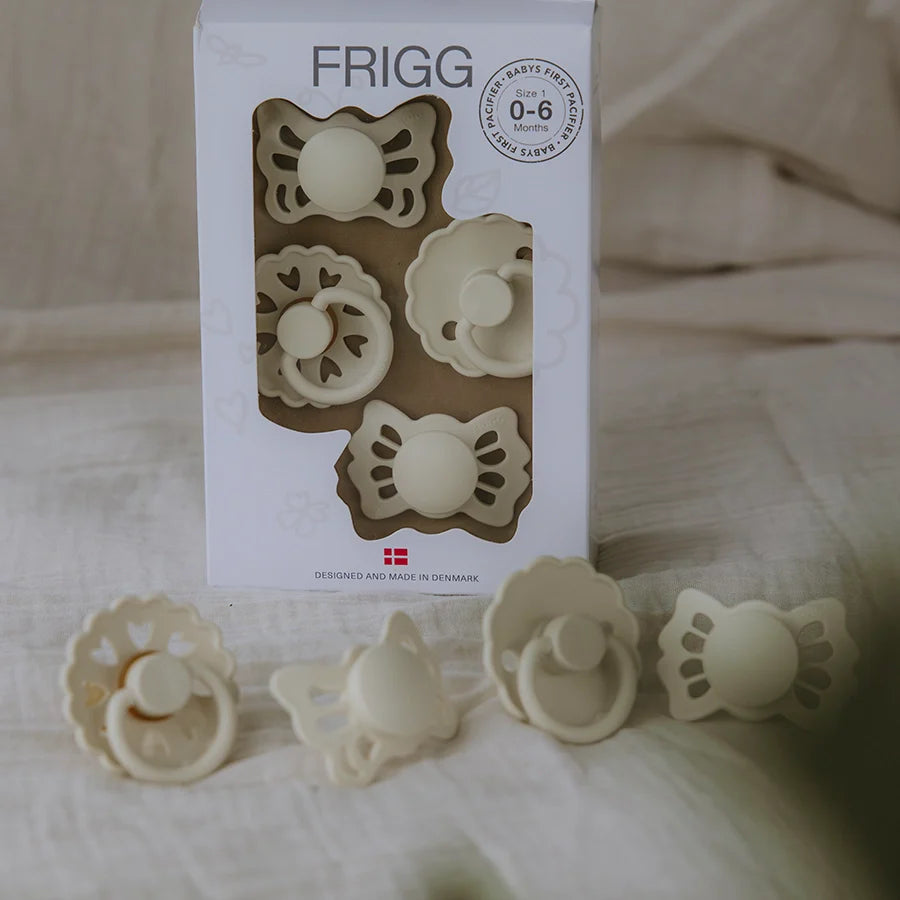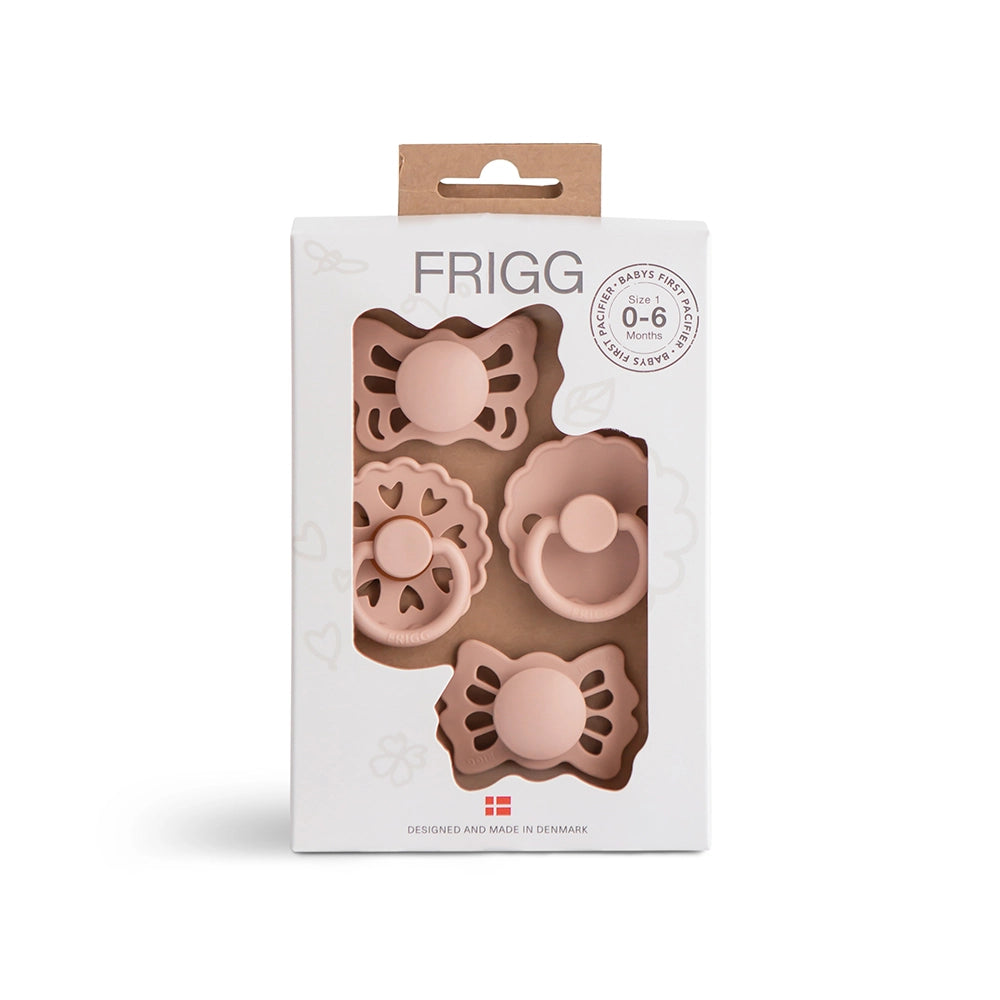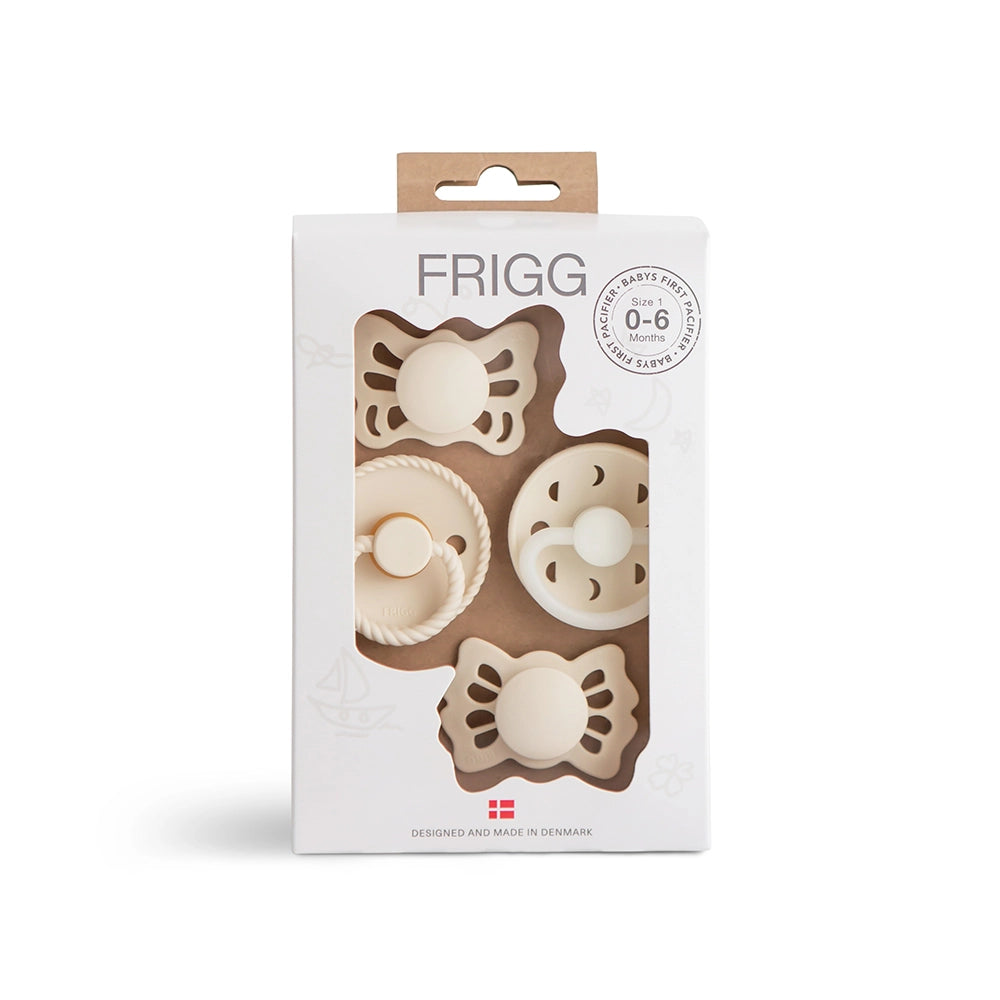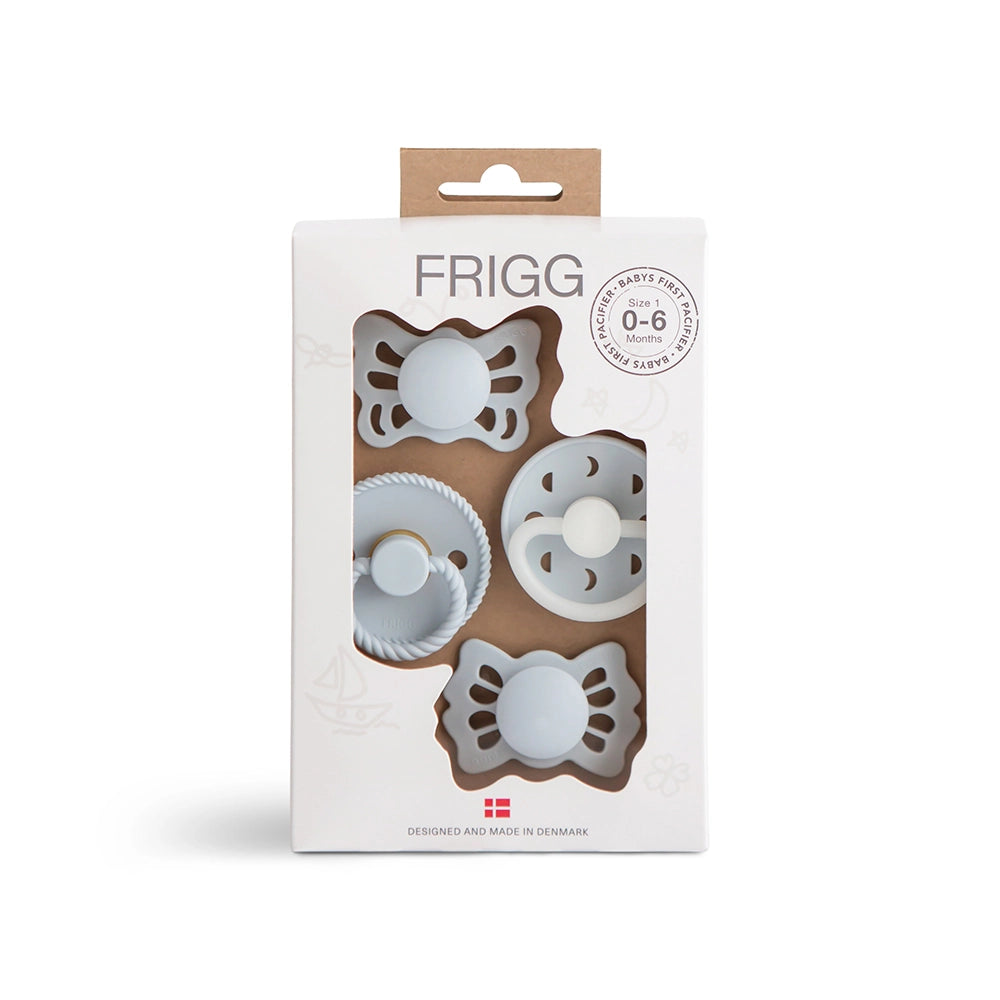Natural rubber (latex) vs. silicone: Which pacifier material is best for your baby?
It starts with a tiny sigh of relief – the moment your baby finds calm in a pacifier. That soft, familiar shape can turn tears into peace, and sleepless nights into brief, blissful pauses. For parents, that comfort matters. And so does the decision behind it.
Should you choose the warm, natural elasticity of rubber or the smooth, hypoallergenic reliability of silicone?
Here’s what you need to know to choose the material that fits your baby best.
Pacifier materials at a glance
Pacifiers today are most commonly made from two materials: natural rubber (latex) and medical-grade silicone. But why these two?
A brief history of pacifier materials
In the early 20th century, pacifiers were often made from glass, ivory, or early plastics - materials that were hard, brittle, and not particularly safe for little mouths. As our understanding of infant health evolved, so did pacifier design.
Natural rubber became popular for its elasticity and softness, closely mimicking a mother’s breast – making it ideal for soothing. Later, silicone emerged as a modern, hypoallergenic alternative: clean, neutral in taste and smell, and easier to sterilize.
Today, these two materials have become the gold standard in baby care – each trusted for its own unique strengths.
At FRIGG, all our pacifiers come with nipples crafted from:
-
Natural Rubber (Latex) - Soft, elastic, and harvested from the sap of the rubber tree
-
Medical Grade Silicone - Durable, transparent, and hypoallergenic
Both are trusted, parent-approved options. But they feel - and function - a little differently. Let’s explore.
Natural Rubber Pacifiers - What are they made of?
Natural rubber is also called latex and is a completely natural material. It comes from the rubber tree, whose juice (latex milk) is extracted and processed into natural rubber. Pacifiers in natural rubber are soft and elastic and can be recognized by their yellow/brown color.
Why parents love latex pacifiers
- Soft and flexible - gentle in the mouth, with a natural softness that many babies find comforting
- Naturally derived - biodegradable and eco-kind
- Stretchy and warm - familiar in feel, especially for breastfed babies
Things to consider
- Distinct scent and taste - comforting to some babies, not all
- More sensitive material - can deform from prolonged boiling or direct sunlight
- Light sensitive - store away from sunlight and heat
- ! Avoid if there's a latex allergy in your family
Silicone pacifier – what is it made from?
Medical grade silicone is the purest type of silicone and is an industrially manufactured material. It’s often used in both the food and pharmaceutical industries. Silicone is clear, transparent, and has a smooth surface.
Introducing: FRIGG Silicone nipple with a SilkySoft™ surface
Our silicone nipple now has a smooth surface called SilkySoft™. It’s even softer than before, which helps minimize the risk of tension in the head and jaw. This improved softness makes it gentler on the baby’s palate and gums – and often more easily accepted due to the smoother feel.
Why parents love it
- Hypoallergenic - ideal for sensitive babies and allergy-prone families
- Odorless and tasteless - great for picky little mouths
- Highly durable - resists wear from sterilization and daily use
- Easy to sterilize - resists heat, bacteria, and everyday messes
Things to consider
- Firmer than rubber - may take getting used to for some babies
- Less "skin-like" feel - texture-sensitive babies may prefer latex
Different materials – different strengths
Babies have their own preferences. Some love the warm, stretchiness of natural rubber - especially if they’re used to nursing. Others respond better to the smooth, scent-free silicone, which can feel cleaner and more neutral.
There’s no wrong choice - just the one that soothes your baby best.
Side-by-Side Comparison of Latex & Silicone Pacifiers
| Feature | Natural Rubber (Latex) | Medical Grade Silicone |
|---|---|---|
| Origin | Natural (rubber tree sap) | Man-made |
| Texture | Soft, stretchy, skin-like | Smooth, slightly firmer |
| Allergy Risk | Yes (if latex allergy present) | No |
| Scent & Taste | Mild, natural fragrance | Neutral |
| Durability | Shorter lifespan | Long-lasting |
| Sterilization | Pour boiling water over | Pour boiling water over |
| Eco-friendliness | Biodegradable | Not biodegradable |
Natural rubber and silicone are two very different materials with different strengths and qualities.







